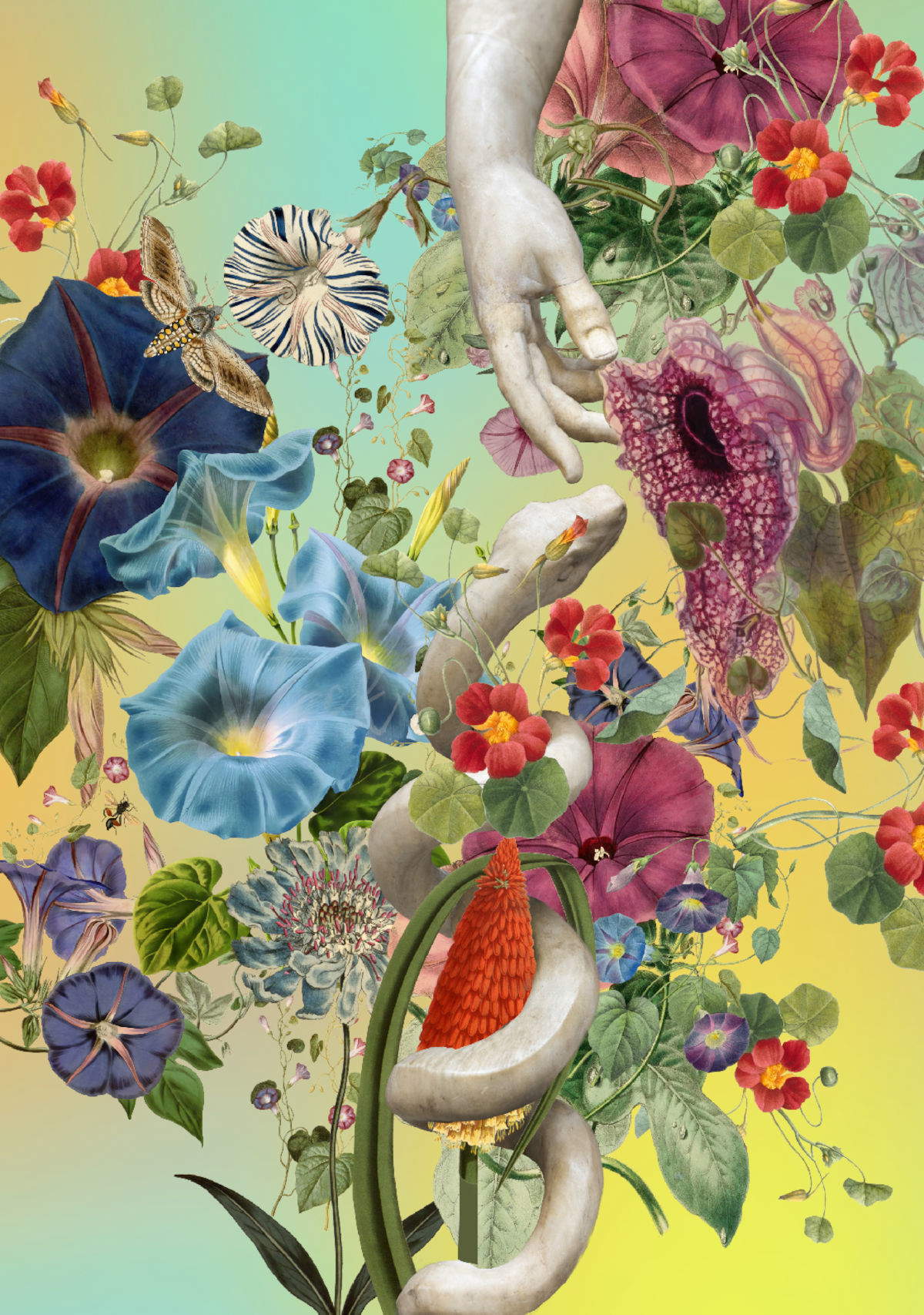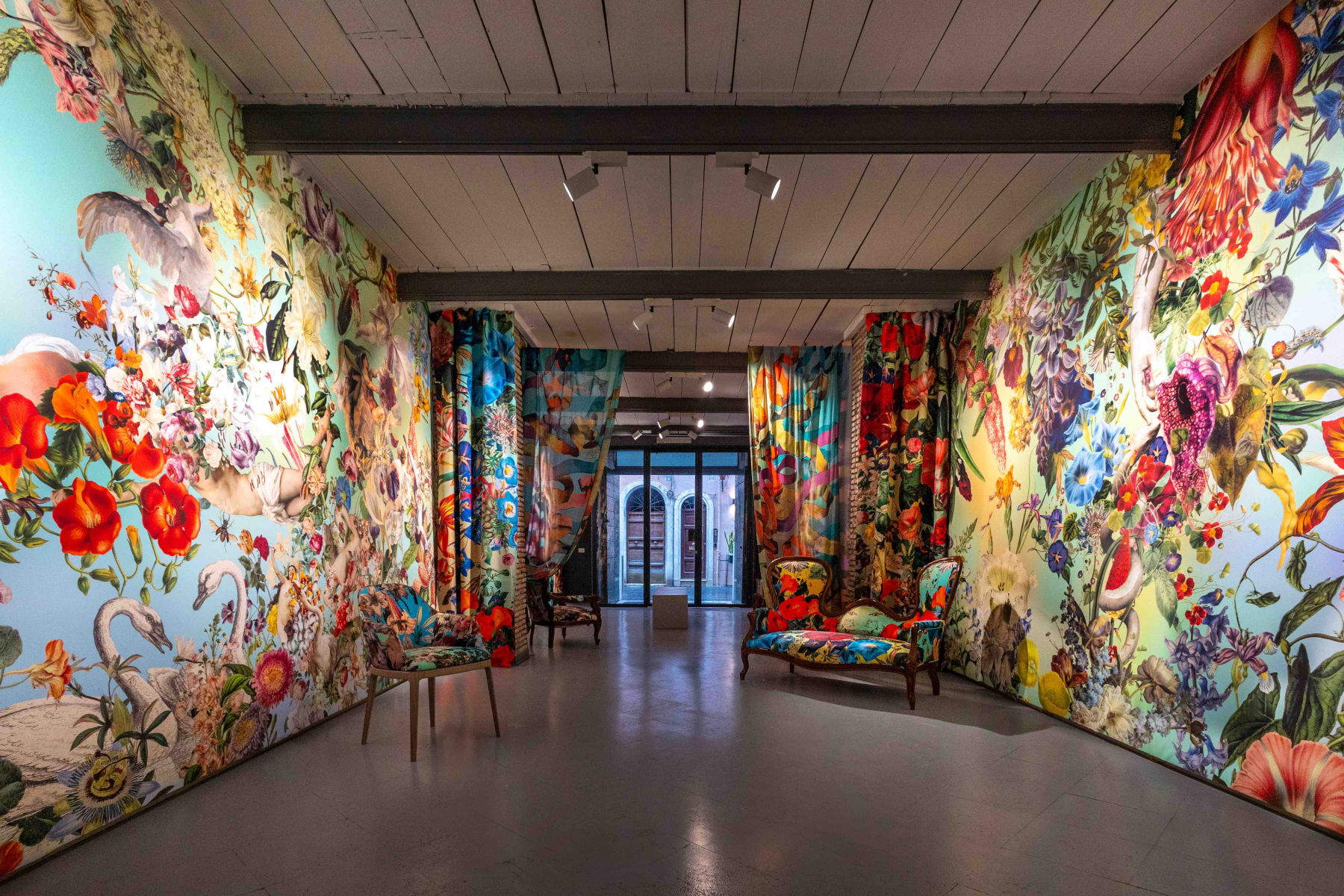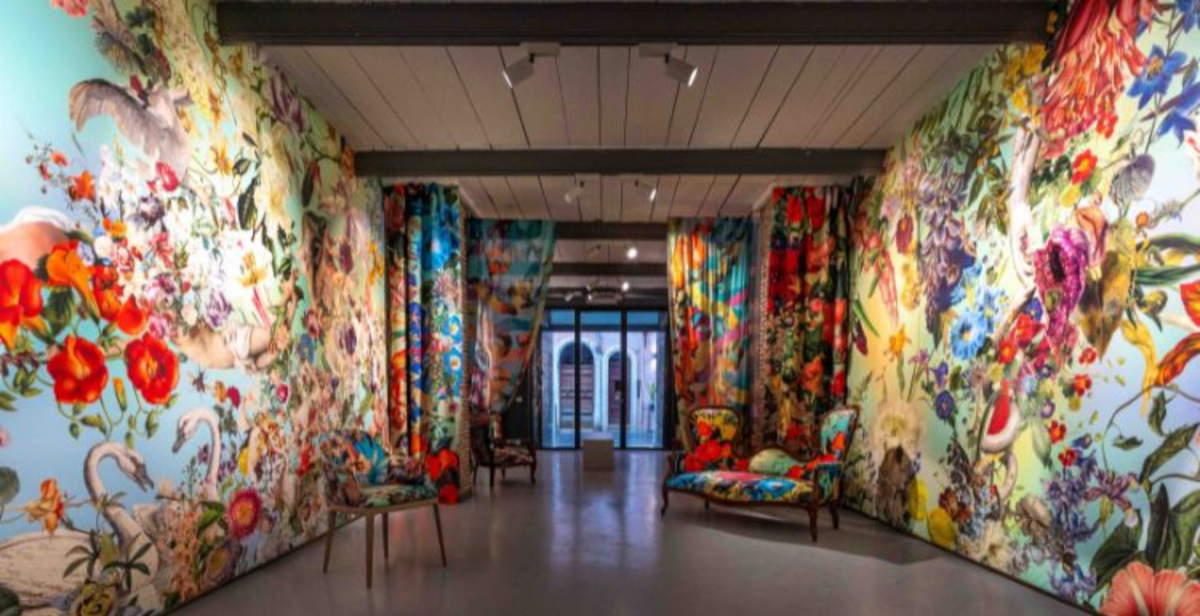It opened last Sept. 26 at Mucciaccia Gallery Project in Rome the exhibition Beauty! A solo exhibition by Austin Young, a solo show by U.S. artist Austin Young. The exhibition, open to the public from Sept. 27 to Nov. 29, marks a new chapter in the visual and conceptual research of an author who has distinguished himself internationally for his ability to combine different languages, from pop to cultured painting, from underground aesthetics to symbolism, to a queer imagery intertwined with cultured references. The exhibition project was designed specifically for the gallery spaces on Via Laurina, in the capital’s historic center. After the success of Temple of Flowers, presented at the Chiostro del Bramante, Young returns to Rome, a city he chose as his second home alongside Los Angeles and Puerto Vallarta. Beauty! continues his investigation of nature and flowers as universal metaphors: endurance, love, conflict, spirituality, science and ecology are condensed into images intended to restore the symbolic complexity of only seemingly ephemeral elements.
Young defines his practice as a form of beauty activism. For him, the creation of such an engaging aesthetic becomes a tool to address contemporary issues, from climate emergency to social change. The installation then transforms the gallery into a lush garden, where natural and human elements come together, creating a sensory environment that aims to stimulate perceptions and emotions. The title Beauty! is a statement of intent; in fact, it emphasizes its use as a critical tool. Beauty, according to Young, becomes a form of political resistance, capable of shifting attention, influencing the emotional state and opening up new perspectives. The artist relates this view to the dynamics of social networks. Research by Meta, which he cites, finds that content based on fear, outrage or anger retains users longer on digital platforms. In contrast, images and narratives related to beauty, joy or the sublime interrupt the cycle of negative attention. For Young, the production of works capable of generating wonder thus becomes a political act that can counteract communication patterns that fuel conflict and polarization.

The exhibition also connects to the artist’s long experience with the Fallen Fruit collective, which he co-founded with David Allen Burns. Formed in 2004, the group has focused its research on fruit as a natural but also cultural and political subject. Through photographic, mapping, video and participatory projects and interventions, Fallen Fruit has investigated the relationship between urban space, collective memory and agricultural dynamics. Some of the best known initiatives include public fruit parks, tree adoptions, and collective actions related to jam production. Fruit thus becomes a metaphor for processes of migration, trade and cultural diffusion: seeds that travel across geographic and social boundaries.
The collective and participatory dimension remains a central element in Young’s individual production as well. Born in Reno, Nevada, the artist developed from a young age a practice that combines disparate influences into a personal language. Photography, video, performance portraiture, and public installations constitute the primary means by which he explores queer visibility, community engagement, and the transformative potential of community. Throughout her career, she has constructed an imagery that weaves together references to pop culture and art history, mixing tradition and experimentation with an approach that eludes categories. In recent years his works have been presented in museum settings and public spaces of international significance. Recent projects include installations for the 60th Venice Biennale, the Temple of Flowers created for the Flowers exhibition at the Chiostro del Bramante in Rome, and an ongoing site-specific commission at the Church of Sant’Aniello in Calabria, where sacred space is reinterpreted through a contemporary language.

“For this new project in Rome, Austin Young chooses a more reflective pace as if for a suspended longing,” writes Claudia Gioia in her critical text. It begins with a mirror in the half-light where we can recognize ourselves before letting go of the temptation and freedom to be other. Then it invites us to enter a transformed environment, past a curtain of draperies that act as a counterpoint to the development of space. Everything is clad in the artist’s imagery. The seats, the furniture, the paintings with gilded frames, the surfaces enter the same visual blender, playing with the architectures that change into backdrops and then into a single scenario to be inhabited."
Beauty! is thus placed within a path that alternates between individual and collective practices, museum interventions and urban projects, maintaining a constant focus on the intersection of aesthetics, nature and society. On the occasion of the exhibition, Silvana Editoriale will publish a catalog with a critical text by Claudia Gioia, which delves into the theoretical and interpretative content of the project. The volume will accompany the works in the exhibition, offering an additional reading tool for understanding the cultural and symbolic references that make up the plot.
 |
| Austin Young brings "Beauty!" to Rome: new exhibition at Mucciaccia Gallery Project |
Warning: the translation into English of the original Italian article was created using automatic tools. We undertake to review all articles, but we do not guarantee the total absence of inaccuracies in the translation due to the program. You can find the original by clicking on the ITA button. If you find any mistake,please contact us.